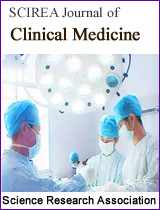Bacteriological Analysis of Drinking Water in Port Sudan City, Red Sea State, Sudan
DOI: 299 Downloads 15648 Views
Author(s)
Abstract
This study was a descriptive study to assess the bacteriological quality of Port Sudan drinking water sources and its subsidiary network until it reaches the consumers; in the period October 2005 and April 2007.Ten samples as negative control, and ninety samples were collected from seven different sources and examined bacteriologically to detect the possible bacterial contamination according to the detection of indicator organisms (total coliform, faecal coliform and Escherichia Coli) and their count. Analysis was done by two methods including multiple tube method (also named most probable number (MPN)) and membrane filtration method (MF). Results obtained revealed the following:- The analysis of negative control showed no bacterial detection.-The analysis of surface water (fresh water) indicated the presence of the indicator organisms (all three types) with the highest average concentrations 1800+org/100 ml by MPN and (1567 org/ 100 ml by MF.-Tubes from wells at the water source were contaminated with total coliform only and with low average concentration of 10.6 org/100ml by MPN and 9.8 org/100ml by MF.-Drinking water samples, after treatment also indicated presence of contamination due to the presence of three types of indicator organisms with figures 793org /100ml by MPN and 542org/100ml by MF (average).This may indicate that the chemical used in treatment or methods of application are questionable.-Desalination water, on the other hand, showed minimal contamination at the site of desalination plant. However, the same water was found to be contaminated during distribution (tankers & jericans).-Samples taken from the drinking water network (houses, reservoirs) were highly contaminated by the three groups of indicator organisms. Therefore, it was not suitable for human consumption. Also the study has shown the following grade:24.4% of all tested samples were excellent, 5.6 % of all tested samples were satisfactory, 12.2 % of all tested samples were suspicious, 57.8 % of all tested samples were unsatisfactory.
Keywords
MPN, MF, Escherichia Coli, Port Sudan
Cite this paper
Abd Elrahman M. A.Osman, Shingray O., H, Mohammed , A. M, Omer M. Tahir, Ahmed A. Mohamedani,
Bacteriological Analysis of Drinking Water in Port Sudan City, Red Sea State, Sudan
, SCIREA Journal of Clinical Medicine.
Volume 3, Issue 1, February 2018 | PP. 1-22.
References
| [ 1 ] | Bordner .R.H., (1978).Microbiological methods for monitoring the environment,J. Environmental Monitoring and Support Laboratory, 6:8—78. |
| [ 2 ] | Bukhari, F. A (2004). Bacteriological Examination of Ground water in Omdurman, Elthawra locality. M. Sc. Thesis, faculty of science and technology .Unv. Of Sudan. |
| [ 3 ] | Burrow William (1959). Text book of microbiology 17th Edition London. |
| [ 4 ] | Cheese Brought, M. (1994). Medical Laboratory Manual for Tropical Countries 11: Microbiology. Cambridge. UK |
| [ 5 ] | Clesceri, Green berg and Eaton (ed.) 1998. Standard methods for the Examination of water and waste Water, 20th ed. American Public Health Association, Washington, D.C. |
| [ 6 ] | Collee, J.G; Morinon, B.P.; Fraser, A.G. Simmons, A. (1996). Maki and McCartney Practical Medical Microbiology (14th edition). Churchill Livingstone New York. |
| [ 7 ] | Elnaw, A.H. (Dec.1984). A study on Port Sudan water supply. M.Sc. Institute of Environmental Studies. U.K. Sudan. |
| [ 8 ] | Eltom, A. M. (1997). Microbiology of Port Sudan supply water Ph.D. Thesis. faculty of Agric. U of K. Sudan. |
| [ 9 ] | Gibb, A. and Partners (1978). Feasibility study for water supply to Port Sudan. Unpublished report, vol. 11. Public Electriccity and Water Corporation, Sudan. |
| [ 10 ] | Hebbert, H. (1935), the Port Sudan water supply, Sudan notes and Records vol.18 pt.1. |
| [ 11 ] | McCarthy, Delong and Grasso.1961. Water sewage works 108-238. |
| [ 12 ] | Ministry of Finance and Economic Planning, (MFEP) (1983). Urban and Regional Environment, General synthesis Report, NO.111, BCEOM. |
| [ 13 ] | Nasir .M. M. A (2003).Port-Sudan madientey organization,J. Port-Sudan medienty ,4:4-9. |
| [ 14 ] | Peter Feng; Stephen D. Weaganat and Michael A. Gran (2002). Bacteriological analytical manual online. USFDA. j, Enumeration of Escherichia coli and the coliform bacteria, 4; 1-15. |
| [ 15 ] | Robert. B.; Bordner; Jon. A. W; Pasquale S. (1995). Standard method for the examination of water and waste water (19th Ed). Microbiological methods for monitoring the environment. Water and wastes. APHA Inc., Washington, D.C. |
| [ 16 ] | Tandon. P.; Chhibber. S. And Reed. R. H. (2005). Inactivation of Escherichia coli and coliform bacteria in traditional brass and earthern ware water storage vessels. Antonie Van Leeuwen hoek,1 :35—48 . |
| [ 17 ] | WHO (1993). Guide lines for drinking water quality: Recommendations. Printed in France .2nd edition vol 1. WHO, Geneva. |

